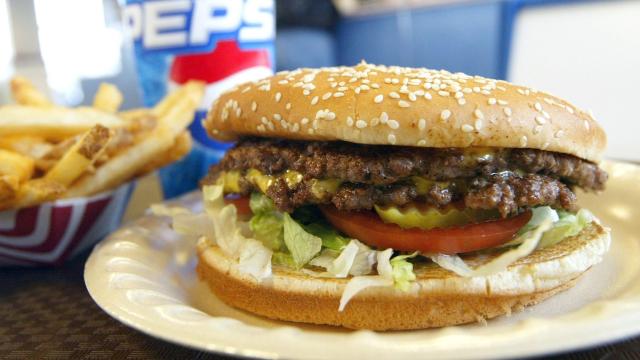Hormone-disrupting chemicals known as phthalates were found in many fast food meals tested as part of new research. The study authors found several different phthalates, as well as other chemicals meant to replace phthalates, across a variety of fast food takeout items, including fries, burritos, and cheeseburgers. Though the health impact of these chemicals is still being studied, the authors argue that more should be done to keep them out of our foods.
Phthalates are a widely used type of plasticizer, used to give plastic and other substances flexibility. They’re also a type of endocrine-disrupting chemical (EDC), which mimic or otherwise interfere with the hormones we naturally produce, like testosterone and estrogen. Studies of animals and humans have indicated that greater exposure to EDCs, including phthalates, can have a negative effect on the development of children and raise their risk of health conditions like asthma, obesity, and later fertility problems, though the exact strength of these associations isn’t clear.
Plastics are ubiquitous in our lives, and so too are the chemicals used in them like phthalates. But researchers from George Washington University’s Milken Institute School of Public Health have found in recent years that fast foods may be a particularly rich source of exposure. A study of theirs in 2018 looked at the urine samples of Americans who took part in a nationally representative survey, and found that those who reported eating at fast food restaurants recently were more likely to have higher phthalate levels than those who ate at home more often.
This new research, helmed by some of the same authors, instead looked at the fast foods themselves. They collected 64 food samples from 6 different restaurants in the San Antonio, Texas area, covering burger shops, a pizza place, and a Tex-Mex restaurant; they also collected pairs of food-handling gloves from three of these restaurants. They tested them all for commonly reported phthalates as well as other plasticizers that have started to be used as supposedly safer alternatives to phthalates.
All told, 81% of food items contained the phthalate di-n-butyl phthalate (DnBP), while 70% also contained di(2-ethylhexyl) phthalate (DEHP), which have both been implicated as possible contributors to fertility problems. About 89% of foods contained some di(2-ethylhexyl) terephthalate (DEHT), a non-phthalate plasticizer. Some research has suggested that DEHT may be a safer chemical than other phthalates, but it hasn’t been studied closely yet, so any conclusion about its relative safety in humans is still speculative, the authors argue. Meat items, including cheeseburgers and chicken burritos, generally had the highest levels of any of these chemicals.
The team’s findings were published Tuesday in the Journal of Exposure Science and Environmental Epidemiology.
“We found phthalates and other plasticizers are widespread in prepared foods available at U.S. fast food chains, a finding that means many consumers are getting a side of potentially unhealthy chemicals along with their meal,” said lead author Lariah Edwards, a postdoctoral scientist at George Washington, in a statement provided to Gizmodo. “Stronger regulations are needed to help keep these harmful chemicals out of the food supply.”
It’s likely that the plastic packaging used to store these foods is one avenue for contamination. But the gloves used to prepare the foods for customers may be another. The team’s other tests found levels of replacement plasticizers in the gloves specifically.
Though the exact risks posed by fast food phthalates aren’t easily measurable right now, the authors do suspect that certain groups are more vulnerable to them. Poorer neighbourhoods tend to have more fast food restaurants, while having less access to fresh foods. And these neighbourhoods are not only divided by class but often race and ethnicity as well. So while these foods aren’t healthy to begin with, phthalates and other environmental toxins may only further exacerbate the health disparities seen between the haves and the have-nots.
“Additional research needs to be done to find out whether people living in such food deserts are at higher risk of exposure to these harmful chemicals,” study author Ami Zota, a professor of environmental and occupational health at George Washington, said.
Scientists and safety advocates have started to become louder about the health and environmental risks (including contributions to climate change) posed by plastics, though industry-led campaigns have pushed back in return. It’ll take systemic efforts to truly reduce the presence of these chemicals in our world, but in the meantime, the authors say these and other findings provide another reason why cooking at home is the better, healthier choice when possible.
